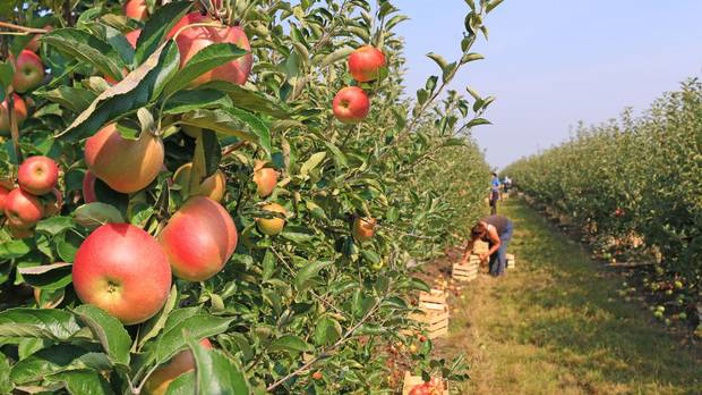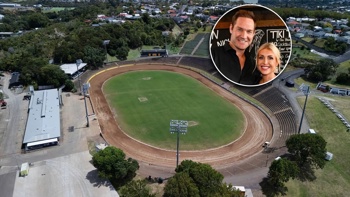Flowering and fruiting seems like a long way from now, but honestly, it’s time to get out and prune the trees that will give us our apples.
There are a heap of varieties. They all taste different and ripen at different times, but when it comes to flowering and fruiting they can roughly be put into two groups: Spur-Bearing varieties and tip-bearing varieties.
Why is that important?
Well… if you prune the “spurs” off in winter you’ll end up with fewer flowers (hence fruit) in summer.
Example: Granny Smith is a tip-bearing variety. Its flowers and fruits set at the end of the branch.
When flowering you often see a configuration of flower buds that can produce as many as 5 or 6 flowers as a “cluster”.
When these flowers are pollinated, each can grow into an apple.
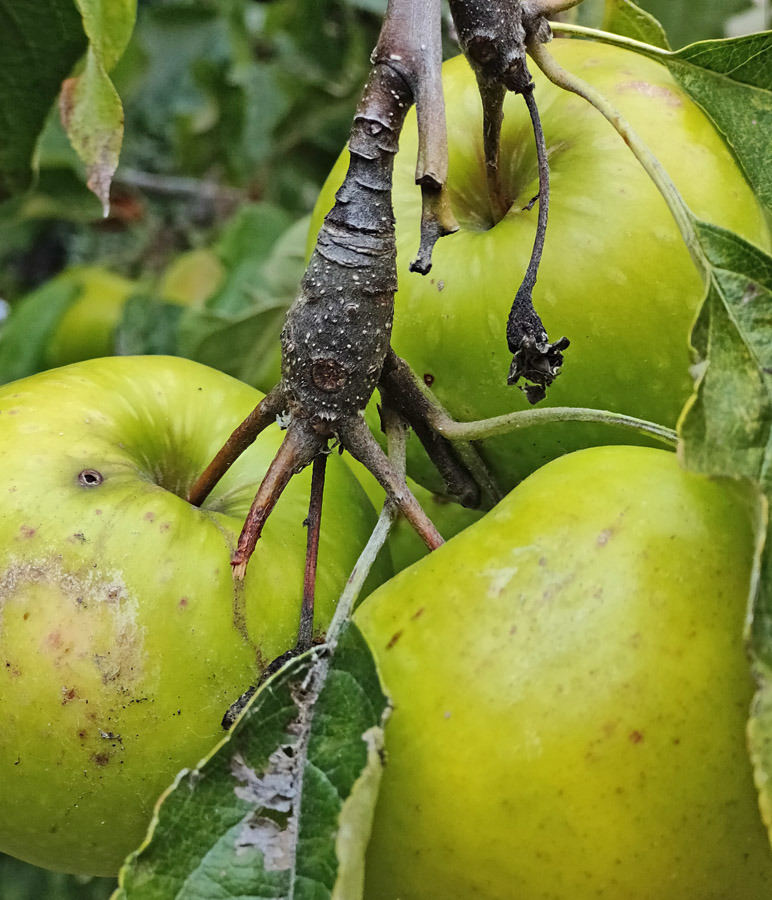 Tip-bearing variety. Photo / Supplied.
Tip-bearing variety. Photo / Supplied.
The next year, when the branch extends further out it has another terminal cluster of flowers at its tip. The previous year’s swollen fruiting spur can still be found further down the branch, and it will still produce apples.
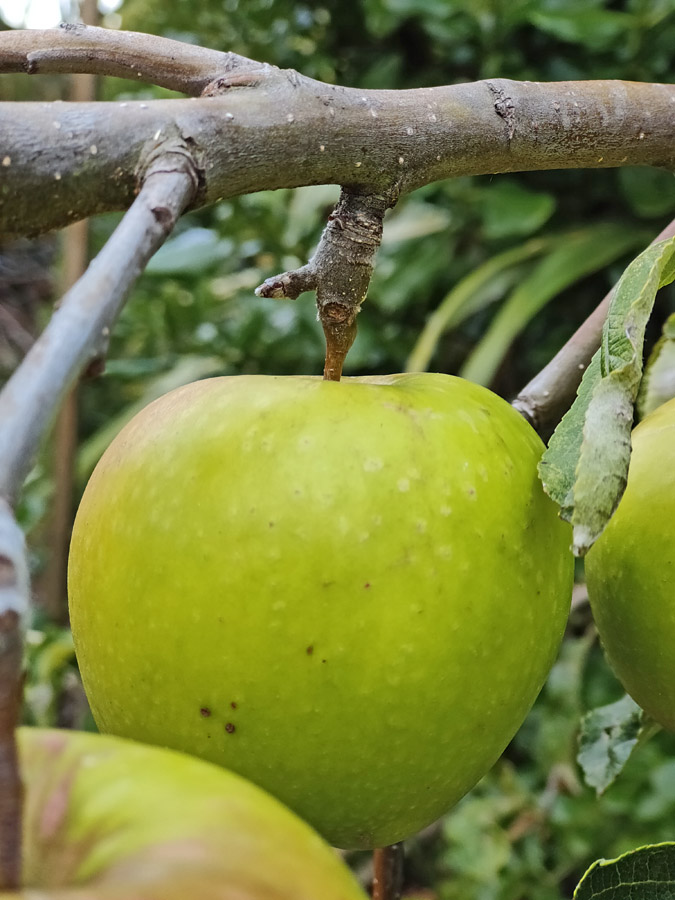
Photo / Supplied.
The so-called Spur-Bearing varieties have their spurs somewhere on the branch and these spurs will keep on producing fruit for a number of years.
Look how easy they are to identify as the spurs: rather fat buds that really stand out on the branches. If you want to trim the branches try to cut them a centimetre or two down from those spurs, so they can keep on producing. This picture shows the early ripening variety “Initial”. It’s one of my first apples in summer.
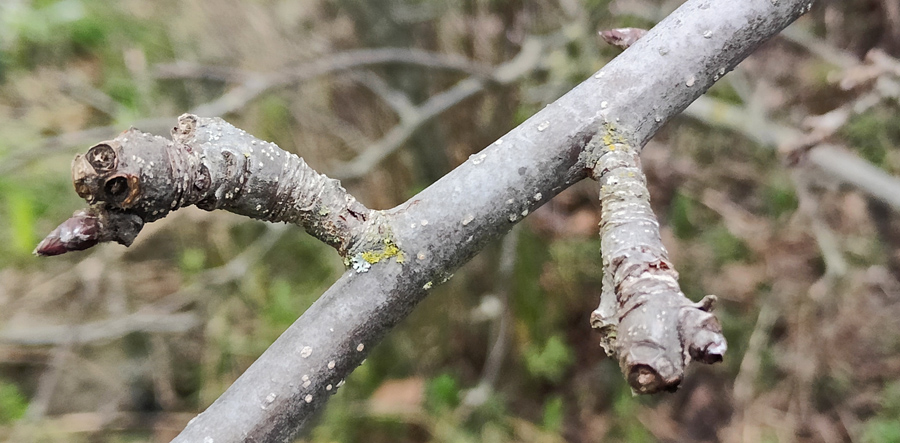 Photo / Supplied.
Photo / Supplied.
A slightly later Apple variety (Mid-Season harvest) is Peasgood Nonsuch. It, too, is a Spur-Bearing variety and the picture (flowering profusely) shows clearly where the apples are produced on the branches. It also indicates how to create a structure of horizontal branched at regular intervals, to keep the tree growing and give the (extremely Huge) apples some space.
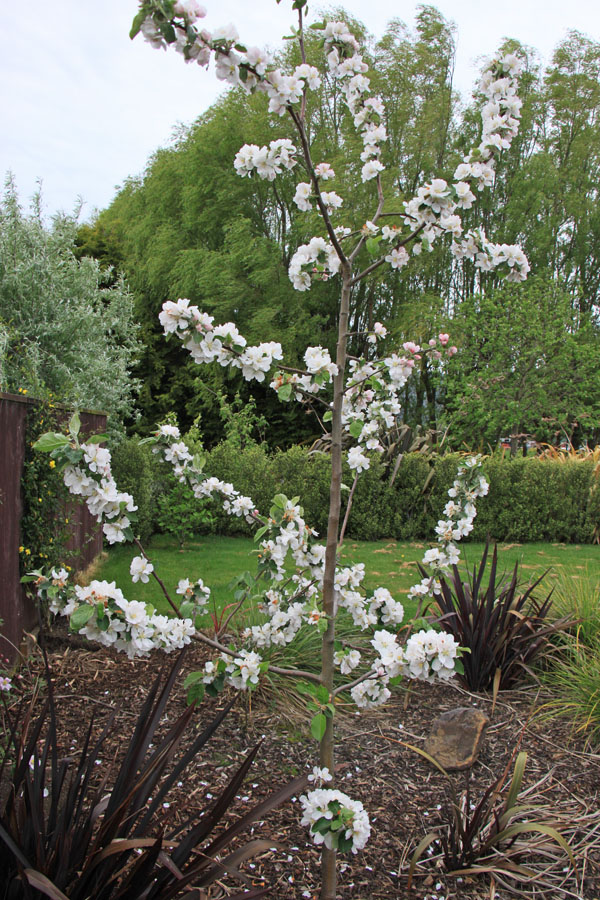
Photo / Supplied.
When it comes to shaping an apple tree after planting it in winter, you have a few great choices: “Cordons”, “Fans”, “Espalier” etc. Seeing now is the time to plant these trees, it might be a good idea to make some decisions about what your trees are going to look like.
See if you can grab a copy of last June’s New Zealand Gardener where Bill Brett explains the very best ways to achieve your Apple “Look”. Just be aware that espaliered trees work best with Spur-Bearing Varieties (not the tip-bearing ones).
Waimea Nursery has a good list of Spur-bearing varieties and also indicates which ones fruit early or later.
LISTEN ABOVE
Take your Radio, Podcasts and Music with you

